REPORT
The CPG Post-Pandemic Outlook
March 2021
Five Trends Emerging from COVID-19 That Will Redefine the Industry
For the last year, Americans have experienced life ruled by a pandemic. In March 2020, within a matter of days, lockdowns and restrictions turned the world upside down. Time, however, has given way to a new, albeit unwanted, normal — one that is poised for even more change.
CPG products have always been essential to Americans’ daily lives, but they took on a heightened importance as millions were suddenly homebound. Panic buying took hold and shelves were cleared. State guidance on everything from essential workers to quarantine requirements changed at a moment’s notice, sowing confusion for production and delivery processes. Failures, lessons and innovation came hard and fast for CPG companies.
While COVID-19 is not yet in the rearview, the arrival of vaccines that prevent its spread brought with it hope for brighter days ahead. There will not, however, be a return to what was considered normal in February 2020. America has been fundamentally changed by the pandemic and “normal” will be redefined by the experience. The question for the CPG industry is how this redefined normal will translate to its business and the consumers it serves.
The following report offers five trends that will redefine the CPG industry as the world emerges from the pandemic, informed by a Consumer Brands Association/Ipsos poll and interviews with Consumer Brands subject matter experts.
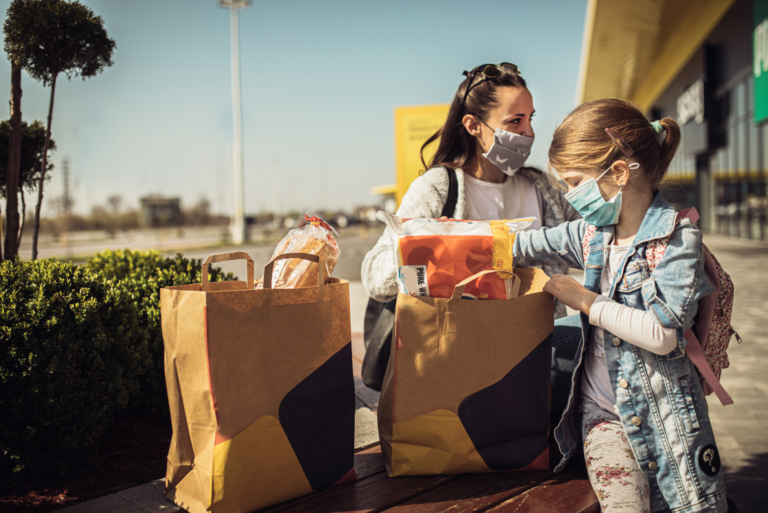
#1: Product Demand
Americans’ slow emergence from pandemic life will keep CPG demand elevated long after the vaccine is widely accessible.
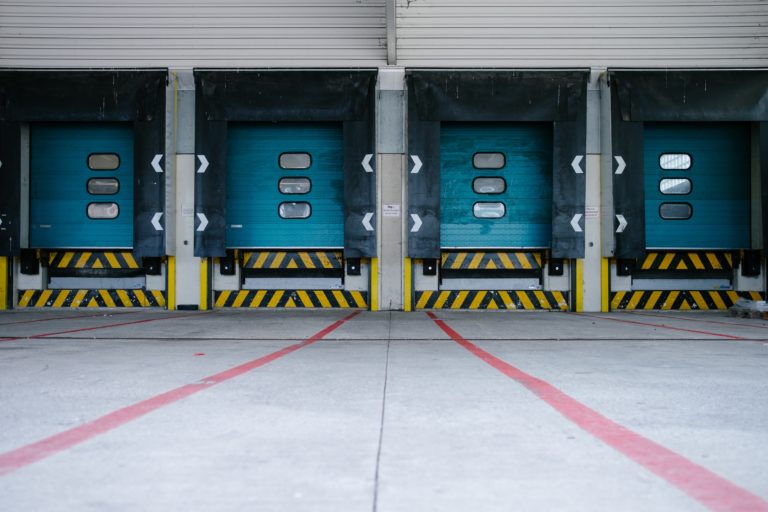
#2: Supply Chain
Supply chain concerns will fade from consumers’ view as shelves stay stocked but will still drive big changes in CPG operations.

#3: Recycling
There will be new urgency to fix the broken recycling system after the consequences of an increase in plastic usage and waste during COVID-19 are realized.
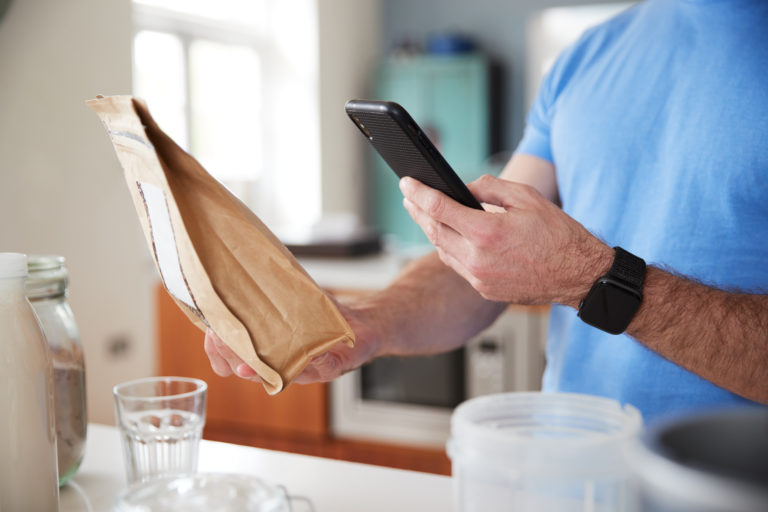
#4: Transparency
Transparency demands will accelerate on consumer expectations, government requirements and new digital fluency after a year of virtual living.
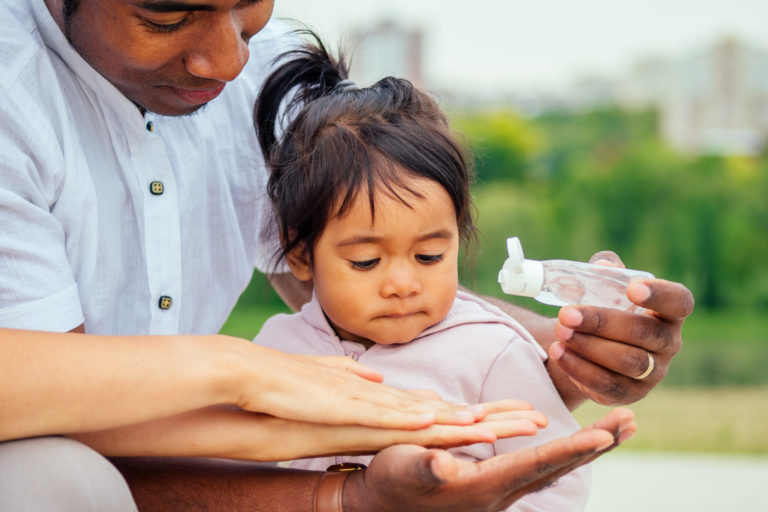
#5: Social Change
The trust in companies that grew during COVID-19 will evolve into businesses assuming the role of societal change agents and forces for good.

Conclusion
The arrival of the vaccine heralded a future where American life would not be run by COVID-19. Now is the time to stop asking what the future will hold and start deciding what the future should be.
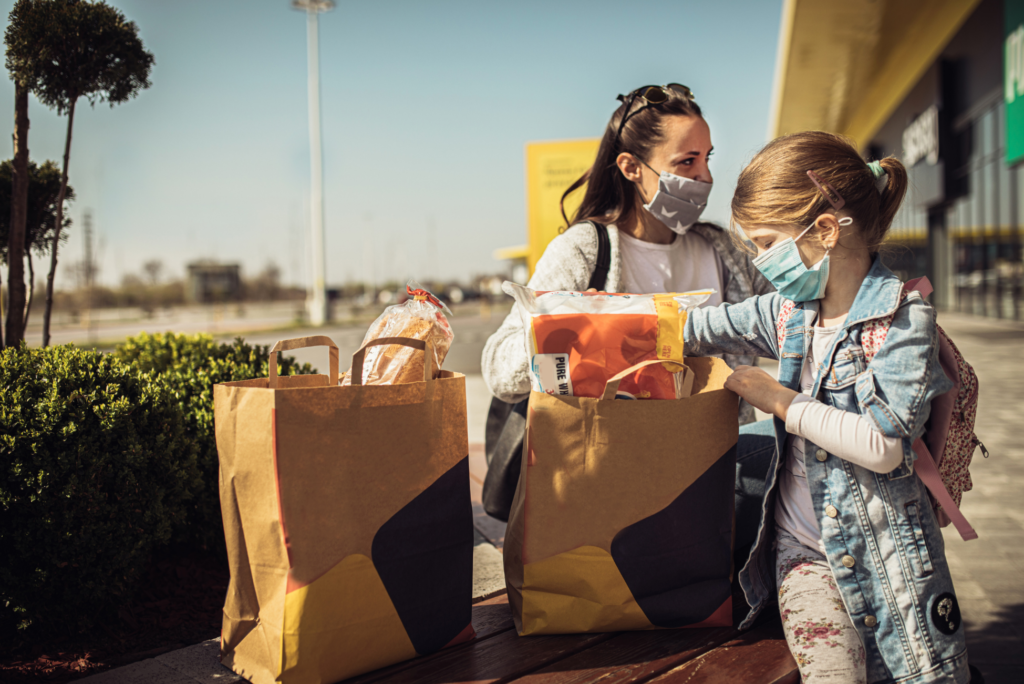
#1: Product Demand
Americans’ slow emergence from the pandemic combined with long-term or permanent lifestyle changes will keep CPG demand elevated long after the vaccine is widely accessible.
Even after the vaccine is deployed, Americans’ tentative comfort with resuming activities combined with permanent lifestyle changes will result in elevated demand for CPG products.
The panic of spring 2020 sent CPG sales soaring 21% year-over-year. As the pandemic wore on, demand settled some, but annual growth still hovered around 10% each month.
Inevitably, demand will lessen as Americans are more readily leaving their homes, dining out, traveling and resuming activities that will shift the intensity of need and volume for many CPG products. But the survey results indicate that emergence will be slow.
When will you consider the pandemic over?
| When most Americans are vaccinated and enough time has passed to know it is safe | 36% |
| The threat of COVID-19 will never completely go away | 33% |
| When most Americans are vaccinated | 12% |
| When the most at-risk Americans and essential workers are vaccinated | 7% |
| The pandemic is over now | 7% |
| When at least half of all Americans are vaccinated | 3% |
Asked when they would consider the pandemic over and resume life as normal, the most common response (36%) was when most Americans are vaccinated and enough time has passed to confirm safety. Nearly the same number (33%), however, said that the threat of COVID-19 will never completely go away. Very few indicated they felt the pandemic was already over (7%) or they would consider it past when the most at-risk Americans and essential workers were vaccinated (7%).
“Over the last year, the CPG industry has met unprecedented demand by being unafraid to change the game,” said Consumer Brands President and CEO Geoff Freeman. “From throwing long-honed supply chain algorithms out the window to moving to 24/7 production, this industry has been nimble, creative and essential to pandemic response — and it will continue to be there for the consumers who rely on it, no matter what’s around the bend.”
Economic Recovery and CPG Sales Forecast
Assuming the vaccine distribution will take until at least summer, COVID-19 will continue to significantly affect day-to-day life for Americans for a while longer. Similarly, the effects of the COVID-19 pandemic will continue to hit the U.S. economy in 2021, with a recovery path that will prove uneven and varied across regions and industries.
The pace of the economic recovery is expected to pick up after the winter months and into the spring, with the expectation of a reacceleration of GDP and job growth. There is, however, still a long road ahead. Consumer Brands estimates that economic activity will not return to pre-pandemic levels until late 2021, with anticipated annual GDP growth of 4-5%, and employment levels will not recover until well into 2022 and possibly 2023.
For the CPG industry specifically, the outlook has differed from the broader economy throughout the pandemic.
“We expect CPG’s economic trajectory won’t miss a beat returning to the long-term growth pattern.”
Despite the vaccine, Americans will still consume more at home, keeping sales of CPG products elevated for much of 2021 — if not beyond. Consumer Brands expects 2021 CPG purchases to decelerate between 1% and 2% from 2020.
Still, the anticipated annual rate of purchases is predicted to be between 7.4% and 8.5% above 2019, the last “normal” year on record.
Key assumptions:
• The long-term CPG growth trendline will continue. The monthly trend from 2018 through 2019 indicates a 3.2% year-over-year growth rate, which, if COVID-19 had never happened, would have conceivably continued.
• Vaccinations continue and prove effective. Vaccine distribution is underway but is going slower than anticipated. CPG purchasing patterns will not change until a significant number of Americans have received the vaccine, likely starting in April as confidence in normal activities, like eating in restaurants, is restored.
• The rate of reduction will be informed by when pre-pandemic spending levels resume. A 1% reduction assumes pre-pandemic spending patterns resume in September; a 2% reduction assumes resumption in May.
- 11/18
- 12/18
- 1/19
- 2/19
- 3/19
- 4/19
- 5/19
- 6/19
- 7/19
- 8/19
- 9/19
- 10/19
- 11/19
- 12/19
- 1/20
- 2/20
- 3/20
- 4/20
- 5/20
- 6/20
- 7/20
- 8/20
- 9/20
- 10/20
- 11/20
- 12/20
- 1/21
- 2/21
- 3/21
- 4/21
- 5/21
- 6/21
- 7/21
- 8/21
- 9/21
- 10/21
- 11/21
- 12/21
- CPG Pre
- 1384951
- 1354881
- 1389264
- 1369261
- 1387203
- 1393401
- 1399105
- 1406865
- 1417520
- 1417873
- 1409264
- 1413050
- 1411442
- 1410303
- 1412940
- 1413968
- CPG Post
- 1413968
- 1676186
- 1475377
- 1538249
- 1550873
- 1564354
- 1556985
- 1561911
- 1558752
- 1565136
- 1561933
- Dec-March
- 1561933
- 1561933
- 1561933
- 1561933
- Forecast May
- 1561933
- 1516728
- 1471523
- 1474740
- 1477956
- 1481173
- 1484389
- 1487606
- 1490822
- 1494039
- Forecast September
- 1561933
- 1549009
- 1536085
- 1523161
- 1510237
- 1497313
- 1484389
- 1487606
- 1490822
- 1494039
- Long-term Trendline
- 1384951
- 1387899.32
- 1390847.64
- 1393795.96
- 1396744.28
- 1399692.6
- 1402640.92
- 1405589.24
- 1408537.56
- 1411485.88
- 1414434.2
- 1417382.52
- 1420330.84
- 1423279.16
- 1426227.48
- 1429175.8
- 1432124.12
- 1435072.44
- 1438020.76
- 1440969.08
- 1443917.4
- 1446865.72
- 1449814.04
- 1452762.36
- 1455710.68
- 1458659
- 1461607.32
- 1464555.64
- 1467503.96
- 1470452.28
- 1473400.6
- 1476348.92
- 1479297.24
- 1482245.56
- 1485193.88
- 1488142.2
- 1491090.52
- 1494038.84
“What I see in the trend line is an industry that was tested at every turn in the last year and responded remarkably to the needs of the consumers it serves,” said Freeman. “Because of the industry’s innovation and tenacity, we expect the future trajectory won’t miss a beat returning to the long-term growth pattern.”
Life After COVID-19
The assumptions of returning to the long-term growth pattern could prove conservative. Once-in-a-lifetime events like the COVID-19 pandemic are bound to permanently change behavior and, as a result, how consumers engage with and depend on CPG products.
Geoff Tanner, chief commercial and marketing officer for the J.M. Smucker Company, joined CPG Speaks in December and discussed the trends his company was seeing. “If you look at coffee, one million more coffee espresso machines were purchased since the pandemic. Eleven million more pets were brought home. Those changes are not temporary, they’re permanent,” Tanner shared. “We’re not going back to normal. These are permanent investments consumers have made and permanent changes in their lifestyle, and that is going to continue to change their consumption habits.”
Perhaps one of the biggest and potentially most lasting changes is the shift to — and acceptance of — remote work for many professionals.
Do you want or plan to continue working from home?
| Response | |
| Yes, 5 days from home | 32% |
| Yes, 3-4 days from home | 27% |
| Yes, 1-2 days from home | 23% |
| No, I do not want to continue working from home at all | 18% |
| Yes (net) | 82% |
The last year served as a proof of concept, showing that productivity can exist anywhere with an internet connection, illuminating the possibilities of fewer employees in the office, from a talent attraction and retention strategy to a means of lowering overhead costs on physical workspaces.
More than eight-in-ten (82%) employees who have had the opportunity to work remotely during the pandemic want to continue to do so, at least in part.
For the CPG industry that will mean continued at-home consumption for a new remote workforce, which will translate to continued demand for this segment of the population.
“Our industry is prepared that there could be a seismic shift in consumer behavior based on the success of the virtual office,” said Freeman. “From fully remote to hybrid in-person and virtual work arrangements, there will not be a return to business as usual.”
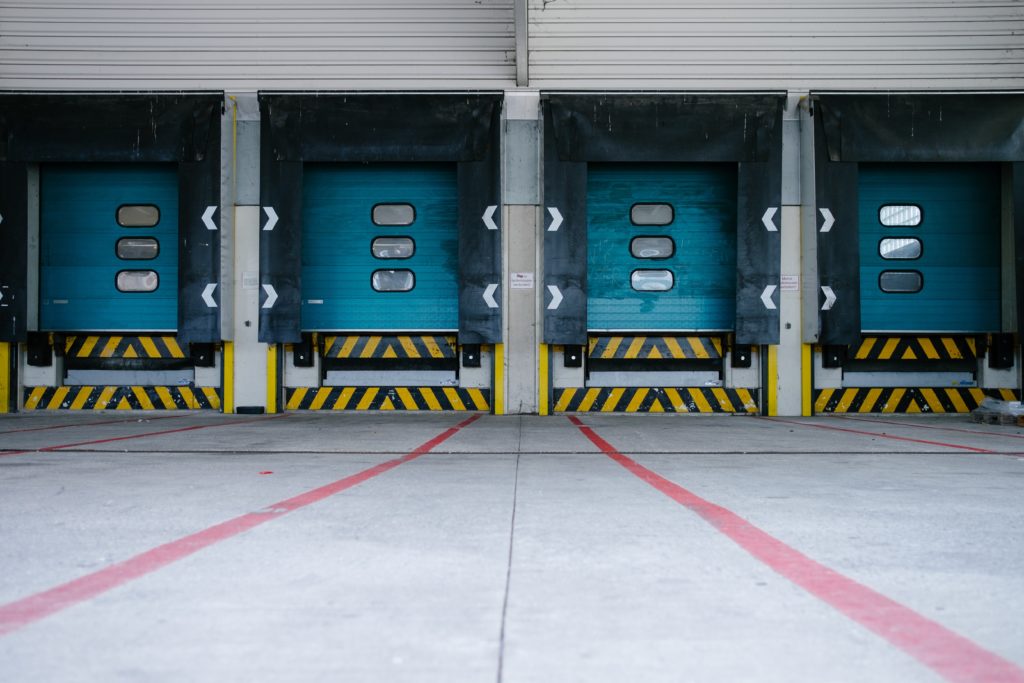
#2: Supply Chain
Supply chain concerns fade from consumers’ view as shelves stay stocked but drive big changes in CPG operations.
With empty shelves a not-so-distant memory, CPG companies have learned from COVID-19 and are improving their supply chains.
Across the industry, CPG companies are applying lessons learned and preparing for permanent changes in the wake of the pandemic. Nowhere is this evolution in mindset clearer than in their supply chains.
Once invisible to consumers, the supply chain was thrust onto center stage, becoming kitchen table conversation in the early days of the pandemic when stocks of high-demand items were wiped out at retailers across the country. In a matter of days, long-honed algorithms were pushed aside in favor of real-time decision-making and human judgment that got products into consumers’ hands faster.
With new attention on the value — and vulnerability — of the supply chain, consumers are placing more importance on its seamlessness. When asked what CPG companies could do to boost consumer confidence emerging from COVID-19, improving the supply chain to reduce disruptions was atop the list, on par with investing in greater workplace safety measures that promote safety and hygiene.
“It makes perfect sense that during the pandemic, we saw consumer trust linked to reduced supply chain disruptions,” said Tom Madrecki, Consumer Brands’ vice president of supply chain and logistics. “Consumers were drawn to the brands they knew and loved, because they wanted something they could count on. On-shelf availability is the physical representation of the industry saying, ‘We’re here for you,’ because they were — time and time again.”
Going forward, supply chains will be focused primarily on resiliency, not only efficiency. From higher inventory levels to innovation based on COVID-19 lessons, the consumer will be at the center of every change.
The survey made it clear that consumers are changing too. The rapid acceleration of e-commerce during the pandemic forced a sea change in how consumers buy CPG products. Nearly half (47%) of consumers said they used online ordering for delivery or click-and-collect services during COVID-19. Of those, 77% plan to continue using them after the pandemic.
“The explosion of e-commerce will force an evolution for CPG and retailer collaboration and bring with it a host of questions around everything from the number of SKUs to consumer data,” said Madrecki. “If there were ever a time to overhaul processes, transform operations and pivot for the future, it’s now.”
Will you stay stocked up on the following?
| Item | Yes |
| Disinfecting wipes | 46% |
| Toilet paper | 46% |
| Shelf-stable food | 45% |
| Hand sanitizer | 43% |
| Paper towels | 43% |
| Freezer food | 37% |
What they buy — or specifically how much — could prove a lingering effect of COVID-19. Survey respondents shared a greater propensity to stay stocked up on the products that were most in demand throughout the pandemic, for fear of being caught without.
The big trip to the grocery store may be more common after COVID-19 as well. Prior to the pandemic, 47% of Americans said they would do larger, infrequent trips to the grocery store. After the experience of COVID-19, 61% of Americans now say the same.
Some of these behaviors may not last, as long as the visible concerns with the supply chain ebb. Madrecki feels that as COVID-19 fades into the rearview, so will the visibility of the supply chain. “When supply chains work well, they’re almost invisible, even though we rely on them every day. The importance of supply chain won’t go anywhere, but consumers will once again have the luxury of it reverting to an everyday assumption.”
Madrecki was quick to point out, however, that empty shelves are not that distant a memory. The brief return of panic buying in November that resulted in some retailers putting purchasing restrictions in place is evidence of how quickly supply chain concerns can come back into view. The difference in November was CPG companies and retailers had learned lessons from the spring that made them better prepared to handle demand waves. “Supply chain will snap back in the minds of consumers if we see empty shelves again — they haven’t forgotten,” said Madrecki.
“Supply chain will snap back in the minds of consumers if we see empty shelves again — they haven’t forgotten.”
CPG companies have already adapted and innovated their supply chains based on the pandemic and will continue to do so. In the short term, Madrecki expects investments in technology that drive efficiency, like the contactless delivery task force that Consumer Brands initiated last year. He also anticipates a year of discussion on how to improve efficiency and resiliency and how to meet new retailer requirements that may change the game once again for CPG companies. “All the changes companies are making to improve their supply chains amount to one purpose — delivering for consumers,” said Madrecki.
Longer term, Madrecki has his eye on both business and policy trends that will shape the future supply chain. From a business perspective, he anticipates companies will shift mindset away from the linear supply chain toward a supply network, taking a more holistic view that leverages real-time and consumer-specific data. He also expects e-commerce to reshape the shopping landscape, with winners determined by how they differentiate themselves on key issues like addressing last-mile costs. The impact of autonomous trucks could be a game changer not only for last-mile delivery, but also for how manufacturers and shippers move products across the country.
The evolution of the supply chain to better serve consumers will be helped by smart policymaking at the federal and state levels. Working with the Council of Supply Chain Management Professionals and researchers at Iowa State University, Consumer Brands recently released a report, U.S. Supply Chain Priorities: The Case for a Federal Office of Supply Chain, which provides a roadmap for policymakers to enhance supply chain resiliency and remedy the current disjointed system to mitigate future disruptions — during crises and not.
“There’s never been a time in American history when the term ‘supply chain’ was such a frequent topic of conversation in Washington policy circles,” said Madrecki. “There are a lot of one-off efforts that could result from the events of 2020, but truly impactful policy will have recognition of the critical role of supply chains as its foundation.”
There’s no single entity within the federal government tasked with addressing supply chain issues, leading to a lack of connectivity across different policy areas and infrequent interagency collaboration. Chief among the policy recommendations in the U.S. Supply Chain Priorities report is the creation of a national office of supply chain to provide visibility and coordination to reduce friction and guard against delays and shortages in the future.
The need to assess the supply chain has captured the attention of President Biden, who issued an executive order to secure U.S. supply chains. Consumer Brands was active in ensuring essential CPG products were included in this assessment and appreciates the administration’s focus on enhanced government leadership and coordination.
“A dedicated office of supply chain, as part of the new administration, would go a long way toward driving increased policy alignment and being a source for creative approaches, in partnership with the private sector, to improve supply chain performance and competitiveness,” said Madrecki.

#3: Recycling
There will be new urgency to fix the broken recycling system after the consequences of an increase in plastic and waste during COVID-19 are realized.
The rise of a new generation and the expectations of consumers will force outdated recycling systems to innovate and evolve to meet the future.
As COVID-19 took hold, environmental concern slipped. Plastic bags returned to where they were once restricted; reusable containers were no longer welcome at cafes; single-use masks and protective items became vital to stopping the coronavirus. Yet the fight against plastic and packaging waste is a critical long-term priority that never faded in view for CPG companies — and is sure to rebound in consumers’ minds, if it hasn’t already.
“Plastic has emerged as the primary target in the global outcry over waste in the environment, and mismanaged plastic can have devastating consequences especially to our marine environment,” said Consumer Brands Vice President of Packaging and Sustainability Meghan Stasz. “But making plastic the sole focus of our ire and action ignores other critical components that will determine our success or failure at keeping waste out of the environment.”
Preferred alternatives to single-use plastic
| Single-use plastic, properly recycled | 14% |
| Paperboard (cardboard) | 13% |
| Glass | 10% |
| Aluminum | 2% |
| A mix of all the above | 59% |
Most Americans (59%) want to see a mix of packaging alternatives, with specific types gathering small followings. Fourteen percent of respondents felt properly recycled plastic is a better option than other alternatives.
While a small minority, their feelings bring to mind a survey conducted by Consumer Brands in August 2020 that showed a majority (62%) of Americans preferred a recycling system capable of effectively dealing with plastic over a wholesale ban on single-use plastic.
“The calls for switching away from plastic altogether, in favor of materials like paper or glass, can help for some products, but there is no perfect packaging material,” said Stasz. “There are pros and cons to the environmental footprint of every material and CPG companies are increasingly making packaging decisions based on what minimizes that footprint.”
Products offered in recyclable packaging have become practically standard. With all 25 of the largest CPG companies pledging to use more recyclable packaging by 2030, a non-recyclable package will be a relic of the past soon. The timing isn’t only right, it’s necessary.
Recyclable packaging is incredibly important to Generation Z — twice as important as it is to even Millennials — and this once young group is increasingly entering adulthood and becoming consumers themselves.
How much are you willing to pay for recyclable packaging?
| I’m not willing to pay more for this product | 42% |
| 1-5% more | 29% |
| 6-10% more | 14% |
| 11-25% more | 10% |
| 26% or more | 5% |
The value they place on recyclable packaging is intrinsic, not financial. Consumers are largely unwilling to pay more for recyclable packaging. Forty-two percent said no to paying more, 29% said they’d pay 1-5% more and 14% said they were willing to pay 6-10%. Very few (15%) were willing to pay 11% or more for products that are in recyclable packaging.
“Recyclable packaging is so prevalent, why would consumers assume it carries additional cost?” asked Stasz. “Recycling is not a new concept — we’ve been doing it for decades — but unfortunately, the prevalence of recyclable packaging won’t matter if we can’t consistently update our recycling system with the technology needed to meet the realities of the 21st century economy.”
“For far too long, innovation has been siloed, but what good does it do if a CPG company invests in research to find a way to make flexible plastics that are easily recycled if there isn’t a system capable — or willing — to take them?”
Regardless of consumers’ willingness or unwillingness to pay more for recyclable packaging, the bill for America’s badly broken recycling system is coming due. Masked for years by China’s acceptance of our waste, the country’s National Sword policy effectively eliminated the market for U.S. recyclables, shining a spotlight on America’s patchwork of nearly 10,000 systems, all operating under different rules and municipal budget constraints, with no requirements to report metrics and no plan for a federal government solution in sight. It also exposed the waste management and recycling processors that failed to update their infrastructure.
“We have to innovate now,” said Stasz. “But we have to do so cooperatively and across the recycling ecosystem. For far too long, innovation has been siloed, but what good does it do if a CPG company invests in research to find a way to make flexible plastics that are easily recycled if there isn’t a system capable — or willing — to take them?”
The planet is the victim of a broken system that has led to confusion, contamination and the breakdown of America’s recycling infrastructure. A uniform, modern recycling system, based on accurate data and benchmarking, will ensure that recyclable materials can be properly collected and processed, creating a circular economy and a strong supply of post-consumer recycled content for use in future packaging.
To make progress, these fundamental changes need to be addressed with all stakeholders in the recycling ecosystem at the table and willing to make hard choices, a reality that led Consumer Brands to convene the Recycling Leadership Council (RLC). The RLC is a diverse group that came together to build a public policy framework to support federal leaders in their role to fundamentally reimagine the U.S. recycling system.
In addition to CPG companies, packaging manufacturers and the recycling and waste industry, consumers are pivotal stakeholders in the recycling ecosystem. “There must be shared responsibility for the environment,” said Stasz. “Much of the responsibility will fall to private industry, NGOs and government, but consumers have a critical part to play that may mean adapting to new norms.”
Consumer Brands’ survey further articulated the challenges of consumer perception. Light-weighting, or using less packaging material, can have a real impact on reducing the amount of waste introduced. Yet smaller packages prompt skepticism.
Most commonly, consumers assumed that a smaller package size meant the manufacturer was trying to increase profits by decreasing product. Another 24% assumed there was less in the package. Only 22% said the company was doing it to reduce the amount of packaging material it used.
If a package of a product you buy frequently were to change to a smaller package size, what do you think is the most likely cause?
| The manufacturer wants to increase profits by decreasing product | 41% |
| There is less product in the package | 24% |
| The manufacturer wanted to use less packaging material | 22% |
| The packaging was redesigned for function | 8% |
| The packaging was redesigned for aesthetics | 4% |
Stasz shared that education about how and why packaging is changing can help consumers grow more comfortable with products they know well taking on a new look. “In the wake of so much change from COVID-19, consumer attitudes and acceptance of packaging that looks and feels different is primed to change too,” she said. “CPG companies can keep pace with consumers and be part of their evolution normalizing smaller packaging and clarifying their reasoning with consumers.”
Whether adapting to smaller packaging or adjusting to new recycling rules, every consumer’s participation is needed and makes a difference, especially as the world emerges from a pandemic that has led to an increase in plastic waste. “Individual consumers may not feel they have the influence to make an impact on the environment, but they are one of the critical players in advancing a world without waste,” added Stasz.
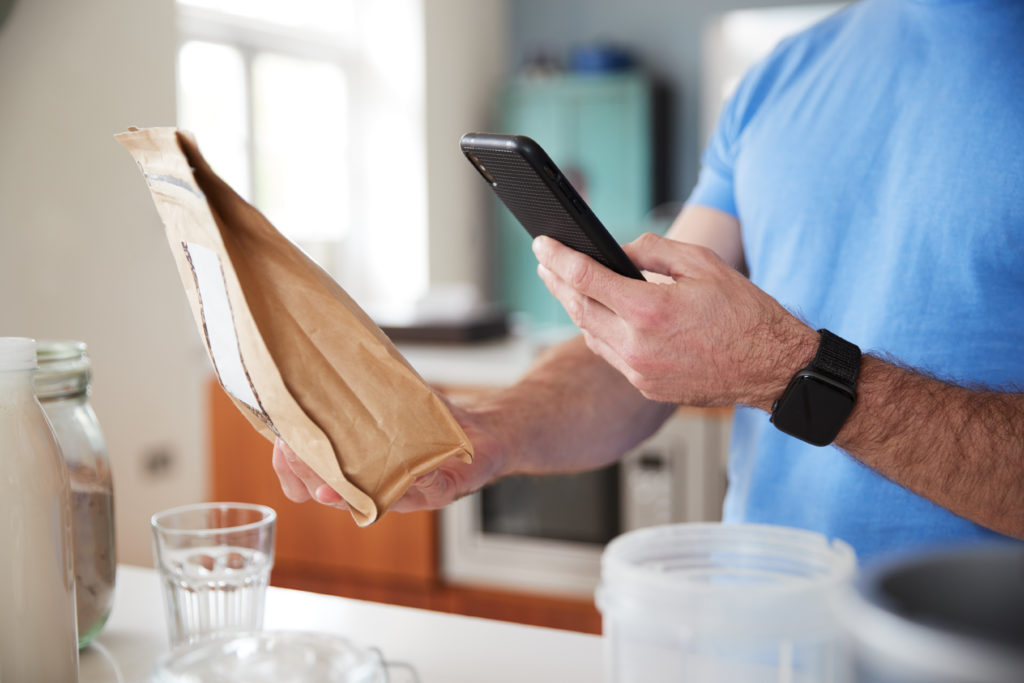
#4: Transparency
Transparency demands accelerate on consumer expectations, government requirements and new digital fluency after a year of virtual living.
As government becomes more open to digital disclosure, technology opens up options for reliability and availability of information and consumers become increasingly fluent online, transparency is accelerating at its fastest pace yet.
There are more options than ever to be an engaged consumer. But most of the information about the products Americans buy every day are confined to a few square inches on the package. In the wake of a pandemic that forced the adoption of digital and touchless solutions, Americans’ fluency with technology was forced to increase. Coupled with the ubiquity of smartphones — which Pew put at 81% of Americans in 2019 — there are ample opportunities to put a wealth of reliable and verified information at their fingertips that goes far beyond what a label can offer.
The majority (73%) of Americans said that they support sharing information digitally that cannot fit on a label. In addition to obvious space limits, one of the most significant drawbacks of physical labels is the lack of real-time information they can offer. Labeling changes can take months and sometimes even years. A digital label can be updated instantly to alert consumers to recalls or share new information about a product.
Who do you trust to determine if CPG products are safe and effective to use at home?
| The federal government and its scientific experts | 40% |
| University-based scientific researchers | 20% |
| Third-party, scientific auditors | 20% |
| State governments and their scientific experts | 10% |
| Other | 7% |
The functionality and potential of digital disclosure is in the government’s sights. Nearly two years ago, the U.S. Department of Agriculture (USDA) included digital disclosure for bioengineered foods. USDA’s acknowledgment of the digital future set the precedent for other agencies. The Environmental Protection Agency (EPA) recently moved to allow disclosure of inert ingredients via a QR code or website link on the product’s label. What is nascent for government, however, has been in CPG companies’ purview for years, with many brands offering detailed information through their own platforms and through digital disclosure platforms like SmartLabel. Their experience will inform the future of digital disclosure.
“The industry is ahead of regulators when it comes to online information sharing, but as that information is not only voluntarily shared but required, the companies that embrace digital options will be the ones that define the standards,” said Betsy Booren, senior vice president of regulatory and technical affairs at Consumer Brands.
The ability to provide more detailed and timely information may translate to greater trust in the companies that provide it: 57% of respondents said that they have greater trust in companies that offer more information than is required about their products, where only 3% said they were less trusting.
Booren envisions a digital product shelf that will feature a system that signals to the consumer verified product information, similar to Twitter’s blue checkmark, to dispel incorrect third-party claims. “Online information provided by the manufacturer gives consumers a trusted place to go and counters the multitude of bad information that they could find across the internet,” said Booren.
Having the government engaged in the process could further reinforce consumer trust. Consumers trust the federal government and its scientific experts to evaluate the safety and efficacy of CPG products by a two-to-one margin over university-based scientific researchers as well as third-party scientific auditors, and a four-to-one margin over state governments and their scientific experts.
“The pandemic changed the digital game. In five years, we will be stunned that we even had conversations about the appropriateness of putting product information online.”
The findings echo a Consumer Brands survey conducted in December 2019, where 78% of survey respondents said that government regulation enhanced their trust.
“The federal government has an essential role to play in evolving into greater digital transparency and providing leadership for the states,” said Booren. “The internet has no borders and ensuring consistent information across states will be key to making digital options effective for consumers.”
Booren made it clear that the online information opportunity goes beyond the label, it does not replace it. Consumers will not see a QR code replace the nutrition facts panel, for example. Rather, they will have the potential to learn everything from the location of the farm where their cereal’s wheat was grown to how sodium carbonate is used in dishwashing detergent to soften water.
Beyond the information itself, a move to digital platforms accommodates where the world is already going. COVID-19 forced a virtual revolution, pushing everything from school and work to grocery shopping online. Further, demand for laptops, tablets and all things digital grew in response to the need to be home. This builds on the near-ubiquitous smartphone usage and the already massive growth in smart home devices. Amazon reported that in a single year, it doubled the number of Alexa devices sold — and that was before COVID-19 hit. “The more people rely on technology for information, the more apparent the need for accurate, reliable product data online,” said Booren. “As the point of sale continues to shift to online options, being fixated on a physical label is not only antiquated, it isn’t meeting consumers where they are.”
“The pandemic changed the digital game. In five years, we will be stunned that we even had conversations about the appropriateness of putting product information online,” added Booren.
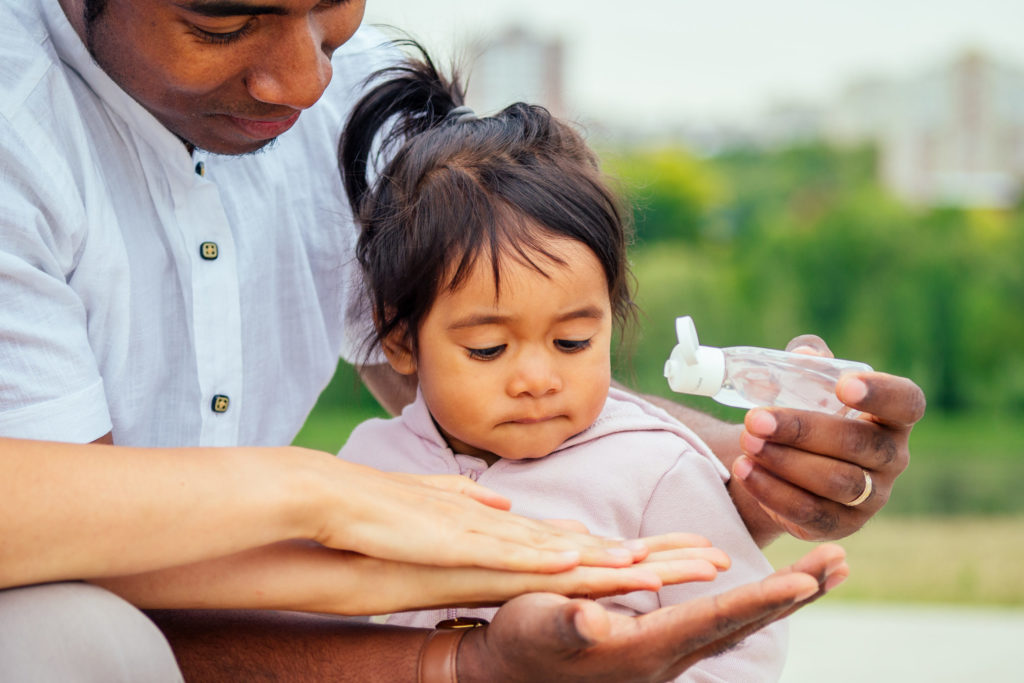
#5: Social Change
The trust in companies that grew during COVID-19 will evolve into businesses assuming the role of societal change agents and forces for good.
The trust in companies that grew during COVID-19 will evolve into an expectation that businesses drive societal change, reinforced by changed government dynamics.
Over the course of the last decade, consumers have changed dramatically, and product offerings have evolved with them. A walk through the aisles of any grocery store shows the proliferation of tailored options, with labels extolling everything from dietary features to eco-friendly attributes.
Beyond the product, the values and practices of companies are increasingly part of the consumer’s calculation to buy — or not. While not a new concept, the amount of information at their fingertips has accelerated conscious consumerism. Spreading the word takes seconds. Twitter has fueled movements to boycott everything from Nike to SoulCycle in recent years.
Americans are more likely to punish a brand they have learned something negative about than reward one they have heard something positive about. While 40% of survey respondents said they were equally likely to take either action, 25% admitted they were more likely to punish and 20% said they were more likely to reward. Only 15% said they were not likely to do either, proving passive consumers a small minority.
“I talk to CPG leaders every day and they are increasingly committed to being a force for good. Expect to see holistic changes. Not just the product, not even just the company — change will extend to anywhere the business touches.”
“How brands are perceived is increasingly rooted in their social and environmental values,” said Ellen Davis, executive vice president of industry engagement at Consumer Brands. “The pandemic and social injustice seen in the last year have further heightened conscious consumerism. I expect to see a new focus on ESG that will drive 10 years of change in a third of that time.”
The COVID-19 pandemic introduced a vulnerability to Americans blindsided by a world changed overnight. Individuals were homebound, scared and questioning what behaviors — from going to the grocery store to opening mail — were safe. In myriad ways, companies stepped up and helped forge the path forward, learning as they went and earning new trust along the way.
In Consumer Brands’ COVID-19 sentiment surveys last year, consumers’ trust in CPG companies grew steadily. The increase in trust was driven by the industry continuing to deliver for consumers and, importantly, for its essential workforce.
“Past public health crises have been about product, involving contamination or recalls — this crisis is about people,” said Booren. “COVID-19 response has resulted in changes to better protect the workforce, many of which will be permanently adopted.”
CPG companies have changed where and how they are investing as a result of COVID-19, but some of the changes will last beyond the pandemic. A McKinsey survey of C-suite leaders at 21 CPG companies found that companies were investing heavily in their essential employees, from offering incentive pay to enhancing workplace safety and hygiene features. The same survey found that the leaders of these companies expect to continue investing at higher levels throughout 2021, a clear indication that the commitment to employees was not exclusive to early COVID-19 response. In fact, one of the only areas the companies reported reduction in investment was in marketing.
“CPG brands are making large-scale investments and commitments to their people, and in many cases leading the entire business community with their vision and persistence,” said Davis. “It is this leadership that will drive big and needed change.”
The moment is ripe for brands to serve as societal change agents — even more so with a new government. Edelman’s 2021 Trust Barometer found that trust in business is higher than NGOs, government or media, and that 68% of respondents felt that CEOs should step in when government does not to fix societal problems: “When the government is absent, people clearly expect business to step in and fill the void, and the high expectations of business to address and solve today’s challenges has never been more apparent.”
President Biden’s administration has shown early that it will not be absent, issuing a series of executive orders that will advance societal change — including action to rejoin the Paris Climate Accord and plans to increase diversity, equity, inclusion and accessibility in the federal workforce. “The political environment has changed, but the role of business won’t. If anything, the new government will mean even greater expectations of businesses to lead society forward,” said Davis.
As the pandemic raged, 2020 also crystallized the severity of racial injustice in America and, while protests have ebbed, the need to take meaningful action has not. “When you talk to CPG leaders, they are intensely focused on improving diversity and inclusion in their companies,” said Davis. “Their efforts aren’t simply about doing the right thing, there is a business imperative for setting and reaching aggressive targets quickly.”
Diversity and inclusion factors strongly for consumers as well. More than four-in-ten (42%) Americans said that buying from companies that have strong diversity and inclusion practices was important to their purchasing decisions.
As more companies look not only inward, but to supplier and vendor contracts to ensure practices consistent with their own values and targets, the ripple effect has the potential to be exceptionally powerful. Case in point, Target has programs to incentivize its first-tier suppliers to buy from second-tier suppliers that are minority owned.
“I talk to CPG leaders every day and they are increasingly committed to being a force for good,” said Davis. “Expect to see holistic changes. Not just the product, not even just the company — change will extend to anywhere the business touches.”
Conclusion
Last March, few could have predicted that one year later, COVID-19 would still have a commanding influence on American life. Now, it is apparent that its shockwaves will be felt for generations.
The word “unprecedented” was used so often in the last year, it became a cliché. But it was, in fact, an unprecedented year. Americans saw their most basic of routines fall victim to an unseeable and seemingly uncontrollable force. Confronted with a thousand disruptions and a thousand more adjustments, change was foisted upon people.
The arrival of the vaccine heralded a future where American life would not be run by COVID-19. It marked the time to stop asking what the future will hold and start deciding what the future should be.
The CPG industry is charting its course. It will emerge from this pandemic changed, fortified with lessons that will make it more resilient, trusted and prepared to meet the needs of consumers, every day.
Read More
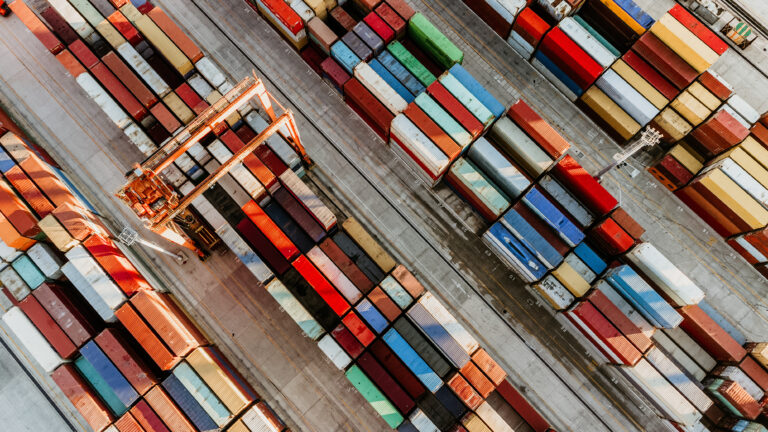
Blog
On Trade: How Renewing the USMCA Agreement Supports American Manufacturing
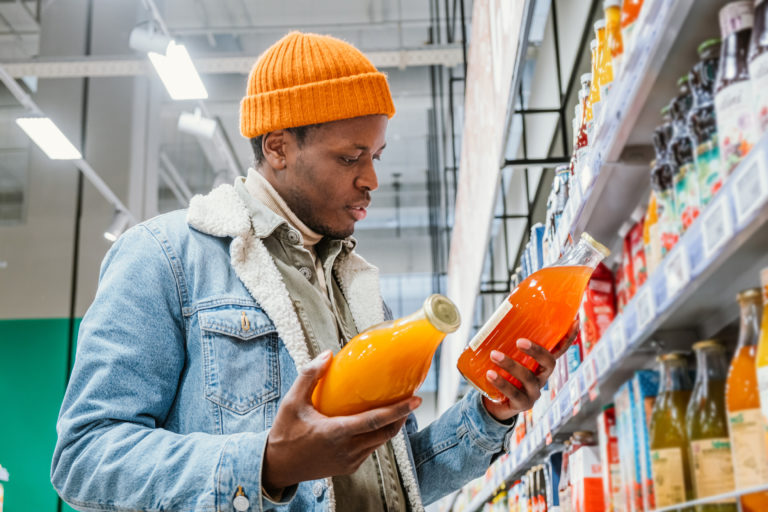
Blog
Consumer Transparency Week: How the Industry Continues to Evolve its Tools to Meet Consumer Expectations

Blog
How CPG’s Transparency Tools Align with FDA Priorities

